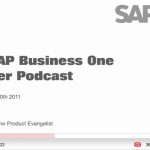Being part of an organisation like SAP where we focus heavily on streamlining processes and ensuring that processes are in place and are followed, I sometimes find myself arguing that the outcome is more critical than the process followed to get there.
However when it comes to business planning I must admit that the opposite is true.
Sometimes, when we think about business planning, we often go back to the output of the planning process and that it the business plan document itself – and when people think about a business plan they think about the heavy, lengthy documents that they learned about in university or that they themselves had to prepare when looking for funding or going to the bank manager asking for that overdraft.
Or maybe, as an SAP Partner you think about the SAP PartnerEdge business plan, which for many partners seems to be more about a revenue number to be achieved rather than a roadmap of how to get there and what the milestones should be along the way.
For me though, being a victim of a failure to plan adequately during my years of running my own business, the business plan document is a key guide to getting to where you want to be and being able to share your vision as well as knowing what the checkpoints are along the way. But I’ll talk more about the business plan document itself in a future post.
For now, I want to focus on the process involved in business planning, which is about taking the time to think about where you want to go first of all, why you want to go there and then finally , how you are going to get there.
As part of the process you’ll be thinking about why you are in business, what you want to achieve as a result of being in business, what is stopping you from getting to your goals and how you are going to overcome those barriers…and I would suggest that these are actually the most important components of the planning process. Unless you have identified answers to all these key questions, you can’t really begin to document the business plan itself.
These are the key areas that you need to address and the process of stopping and dedicating some cycles to the answers to these questions should reveal a lot of hidden gems that you can then use in the formulation of your plan.
As an example, think about the kinds of customers that you want to work with – John Jantsch refers to these as your Ideal Customers and identifying who these folks are is step one that you need to take in order to build an effective marketing plan that you can execute against – by simply thinking about the kinds of organisations that benefit from your product or service, appreciate what you do, pay your bills on time and so on can give you a new level of clarity on what you need to do to find more of the same ideal customers. And thats a key component of your business plan – who is your target market – so you can see that all these things are connected.
So I would encourage you to stop for a while, take time out from the day to day processes of working in the business and spend some time thinking about the answers to these questions – even if you aren’t in a formal business planning process per se, the opportunity to get some clarity around your purpose and refocus on why you do what you do will be invaluable.
Now, when it comes to the actual business plan itself, I’ll cover that in another post but here’s a hint. I have always been a fan of Tim Berry, the man behind Palo Alto Software and Business Plan Pro, a fantastic piece of software that will help you assemble your thoughts in to a coherent plan.
Tim’s most recent book – The Plan As You Go Business Plan has some great advice about focusing on the areas you need to address first, rather than going through the traditional business planning process. I would encourage you to take a look at his book – you can learn more about it by visiting www.planasyougo.com – in fact for the the firast 10 people who drop me an email, I’ll be happy to give you a copy of Tim’s book with my compliments.
Just email me at richard.duffy@sap.com and I’ll arrange to get a copy out to you ASAP.
I’m also happy to help you out by providing a sounding board for you as you go through the process – drop me a note at my email address above and I would be more than happy to assist you.







Get Social